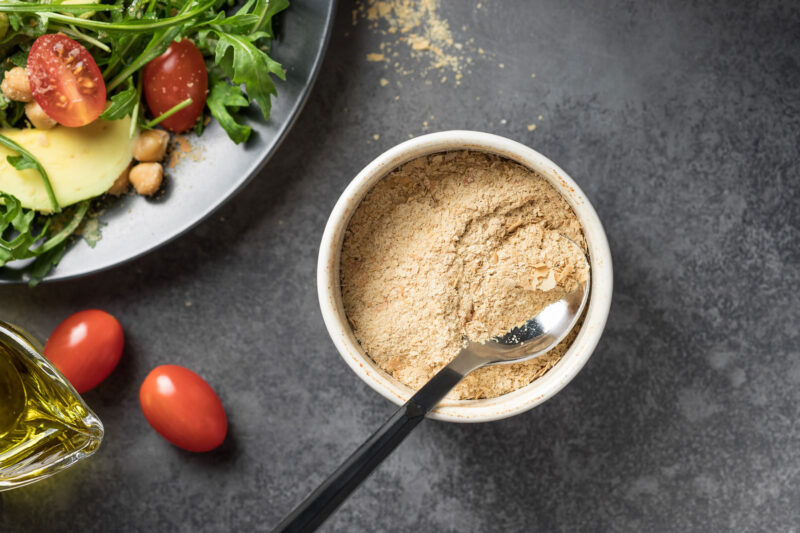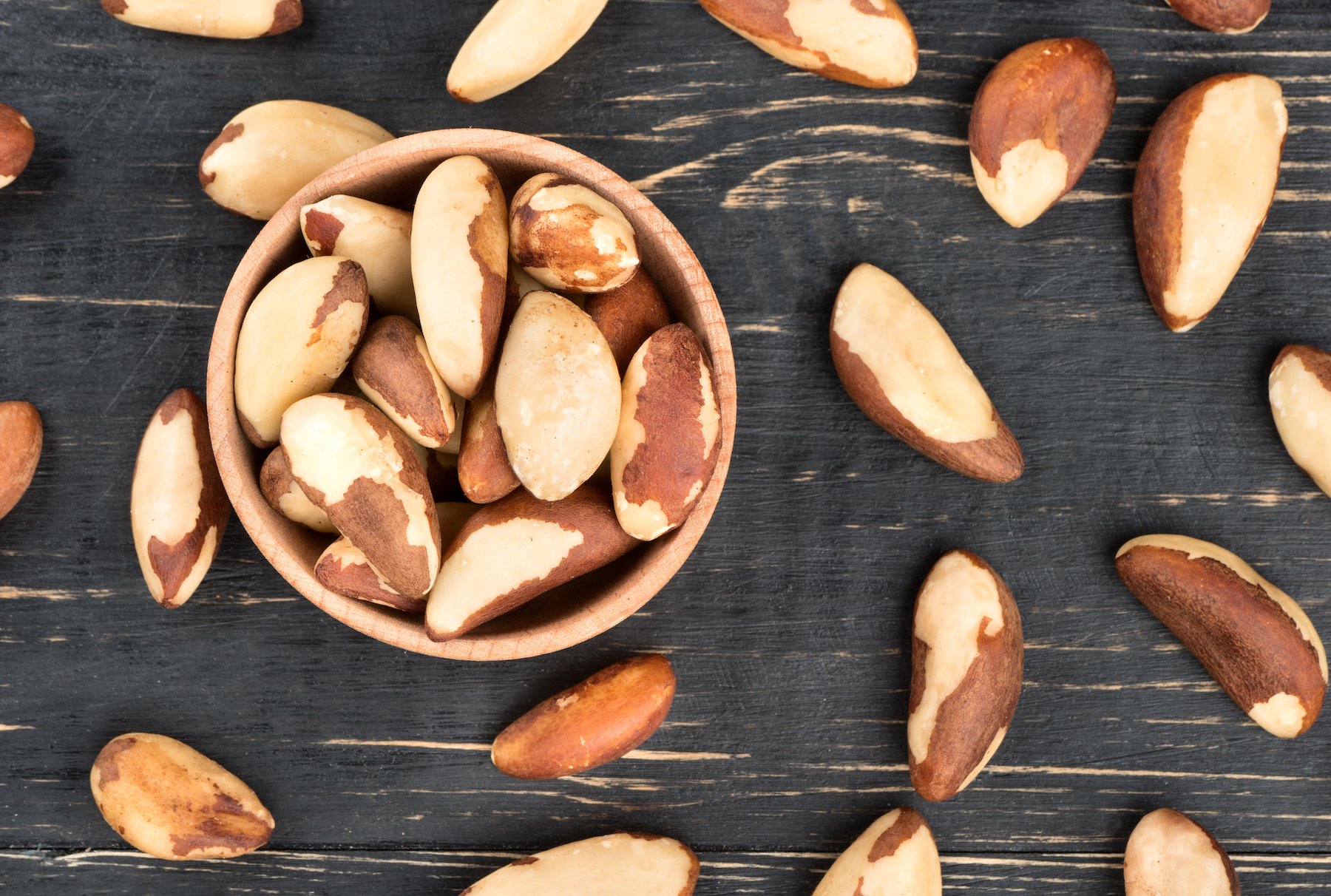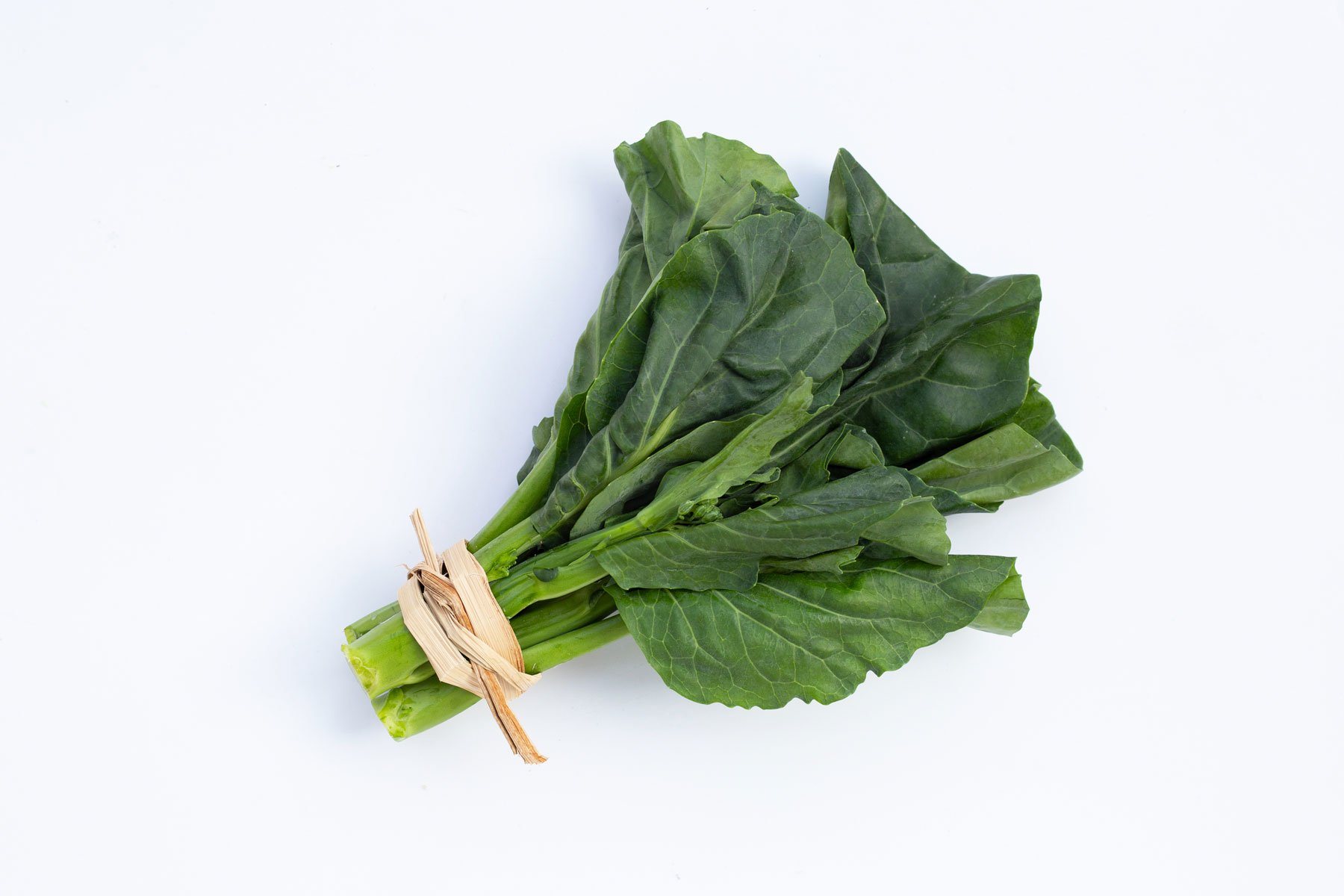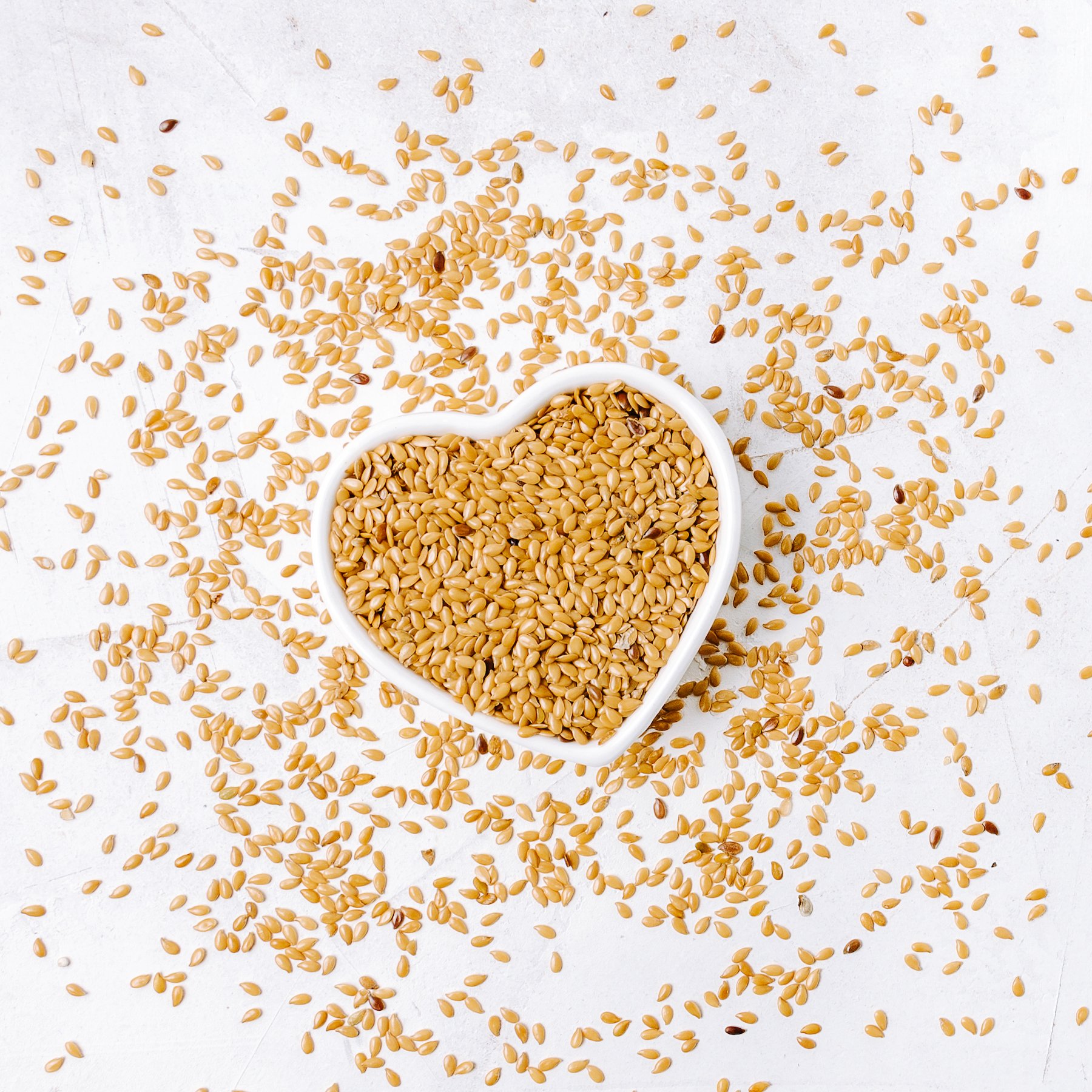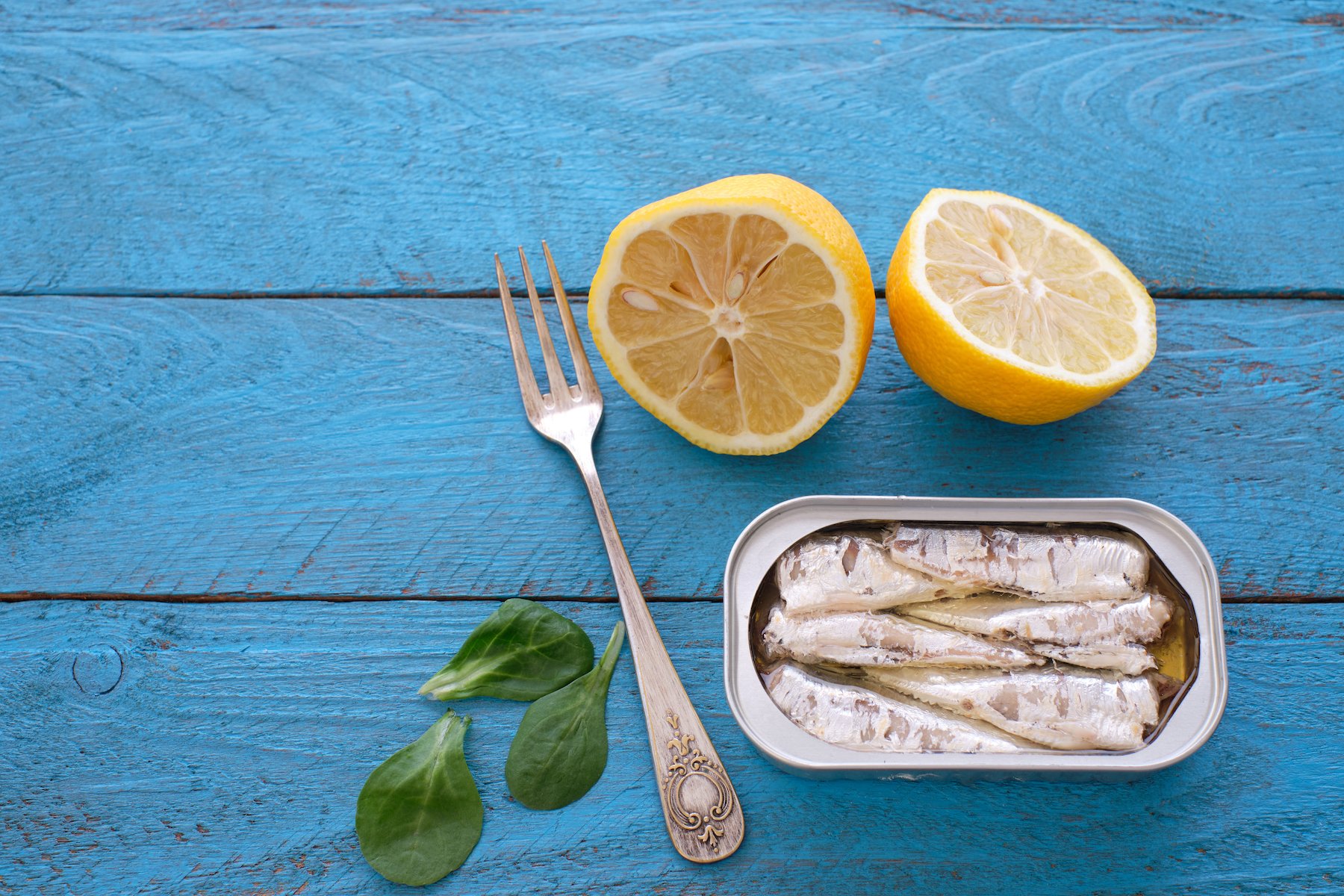Nutritional Yeast Basics
Nutritional yeast is that cheesy, nutty, umami-loaded seasoning that plant-based eaters sprinkle on just about everything. But this flaky flavor booster makes a smart addition to your pantry, no matter your dietary preference, given its solid nutritional profile.
Sometimes referred to as “nooch,” nutritional yeast is an inactive form of a yeast strain called Saccharomyces cerevisiae. If that sounds familiar, it’s because this is the same strain used to bake bread and brew beer—but in this case, the yeast is pasteurized and dried with heat after it’s grown (typically on a sugary medium like molasses) to deactivate it. So it’s not a live yeast, and it has no leavening, or rising, power—it’s grown specifically to be used as a food.
Nutritional yeast is a good source of plant-based protein and even packs a little fiber. While the exact nutritional breakdown varies depending on the brand, a two-tablespoon serving typically contains around 40 calories, 0 g fat, 3 g carbs, 2 g fiber, 5 g protein, and 20 mg sodium, plus some trace minerals and several B vitamins (more on those later).
Nutritional Yeast Metabolic Punch
Nutritional yeast is relatively high in protein for its small serving size (5 g per 2 tablespoons), and 2 of its 3 grams of carbohydrates are fiber. Both protein and fiber slow the rise in blood glucose after a meal. Nutritional yeast is also considered a complete protein—meaning it contains all 9 essential amino acids our bodies can’t make on their own. This makes it particularly appealing for people following a vegetarian or vegan diet (or anyone looking to swap some animals for plants) since most complete protein sources are animal foods.
While growing, nutritional yeast naturally produces several vitamins and trace minerals, including B vitamins. Nutritional yeast contains vitamins B1 (thiamine), B2 (riboflavin), B3 (niacin), B5 (pantothenic acid), B6 (pyridoxine), and B9 (folic acid) in amounts ranging from 12–65% of your recommended daily intake, per one brand selling unfortified nutritional yeast. Nutritional yeast contains calcium, iron, potassium, selenium, and other minerals as well, but these are rarely listed on the label and likely present in small amounts.
But, most brands of nutritional yeast you’ll find at the grocery store have been fortified with additional B vitamins (making them function sort of like a B-complex). This includes vitamin B12, which is naturally only found in animal products—another reason nooch is popular with vegans. A two-tablespoon serving of Bragg brand fortified nutritional yeast contains:
- Thiamin (B1): 520% DV
- Riboflavin (B2): 480% DV
- Niacin (B3): 220% DV
- Vitamin B6: 420% DV
- Folate (B9): 90% DV
- Vitamin B12: 630% DV
B vitamins are essential micronutrients. While each has unique roles, all B vitamins take part in metabolism—they help unlock the energy potential of foods we eat by acting as coenzymes in reactions that break down carbs, protein, and fat and use their byproducts to generate ATP. As for some specific B vitamin roles and perks: Folate, B6, and vitamin B12 each play a role in breaking down the amino acid homocysteine and can help keep your levels in check. Elevated homocysteine has been associated with atherosclerosis, cardiovascular disease, insulin resistance, and Type 2 diabetes. And higher levels of vitamin B6 have been associated with reduced risk of Type 2 diabetes. (Learn more about the other roles of B vitamins here.)
Nutritional yeast also contains a group of polysaccharide carbohydrates called beta-glucans (mushrooms do too). Yeast beta-glucans have been associated with immune and metabolic benefits (such as reduced inflammation and waist circumference and reduced cholesterol levels) in preliminary research.
Finally, nutritional yeast contains no gluten, dairy, nuts, or sugar—making it suitable for people with a range of dietary preferences, allergies, and intolerances. However, there’s some evidence suggesting nutritional yeast may aggravate inflammatory bowel disease (like Crohn’s), and that tyramine, an amino acid in nutritional yeast, may contribute to migraines and interact with MAOI antidepressants.
Nutritional Yeast Buying Advice
The main thing to know when buying nutritional yeast is that fortified and unfortified versions exist. The difference? Fortified nutritional yeast will contain much higher amounts of these B vitamins, and only fortified nutritional yeast contains vitamin B12. Often, nutritional yeast won’t be labeled “fortified” or “unfortified,” but you can always identify fortified products by the presence of vitamin B12 (yeast can’t naturally produce this particular B vitamin).
Which type should you pick? It’s all about your personal needs and preferences. If you’re on a plant-based diet or simply want to benefit from higher quantities of B vitamins, opt for a fortified product. If you’re more interested in nutritional yeast’s flavor-boosting properties and protein, and you’d rather not consume synthetic nutrients (which some nooch lovers say alters the final flavor profile), then opt for unfortified yeast.
Also consider the fact that yeast is grown on a sugary medium like molasses, which can be made from sugar beets—almost all of which are genetically modified. If that’s a concern, you may want to consider choosing a non-GMO product. A couple brands to consider: Bragg Nutritional Yeast (fortified) and Simply Organic Nutritional Yeast (unfortified).
Tips for Using Nutritional Yeast
Nutritional yeast should last about two years when stored in a cool, dry place with the cap tightly sealed. To preserve those B vitamins (which can degrade when exposed to light), keep it in a dark cabinet or drawer. To use nutritional yeast, simply sprinkle it onto finished dishes (salads, roasted veggies, popcorn), or use it in recipes as directed.
Ideas for Eating Nutritional Yeast
Nutty, salty, cheesy, and umami are all words used to describe nutritional yeast—no wonder it’s a staple seasoning and parmesan stand-in. While you can sprinkle on some nutritional yeast whenever you need a punch of flavor, here are some specific ways to use it.
- Pasta, salad, soup, and veggie topper: Sprinkle some nutritional yeast directly onto your low-carb pasta and noodle dishes, salads, soups, and stir-fried or roasted veggies for a hit of flavor that almost mimics parmesan. People love it on popcorn, too. (Fun fact: both parmesan and nutritional yeast contain glutamic acid, which provides that umami oomph).
- Parmesan cheese alternative: While nutritional yeast is tasty on its own, the flavor profile and mouthfeel doesn’t quite match up to parmesan since it lacks fat. The solution? Nuts! Try this plant-based parmesan alternative made by pulsing just three ingredients—nutritional yeast, Brazil nuts, and sea salt—in a food processor until crumbly.
- Dairy-free pesto: Simply swap out the parmesan cheese in pretty much any traditional basil pesto recipe with nutritional yeast (use this recipe as a guide). Or put a spin on a classic and make your pesto with nutritional yeast, arugula, kale, walnuts, and olive oil.
- Cheesy mashed “potatoes:” For a low-carb, dairy-free side that tastes indulgent, steam cauliflower and blend with nutritional yeast, cashews, garlic, olive oil, and salt.
- Alfredo sauce: Using similar ingredients (cauliflower, cashews, garlic, olive oil, lemon juice, nutritional yeast, Dijon mustard, salt, and pepper), you can make a lighter Alfredo sauce that tastes great over warm zoodles or even roasted veggies.
- Crispy air fryer artichokes: Courtesy of nutritionist Kelly LeVeque, this delicious artichoke appetizer is ultra simple: Drain a can of artichokes, halve them, and coat with a combination of nutritional yeast, garlic powder, salt, and almond flour. Air fry at 425 F for 15 minutes, until crispy, and serve up with a side of garlicky tahini dip.
- Creamy dressing: Nutritional yeast makes a great addition to all sorts of dressings and dips. This creamy dreamy dressing has nutritional yeast, apple cider vinegar, coconut aminos, garlic, EVOO, salt, and pepper. Blitz ingredients in a blender until smooth.
- Vegan broccoli soup: This soup is loaded with veggies, and its creamy base is made from a blend of potato, cashews, carrot, celery, garlic, onion, Dijon, apple cider vinegar, broth, and spices. Add some roasted broccoli and stir in a few tablespoons of nutritional yeast, and you’re good to go with a healthier spin on a heavy classic.
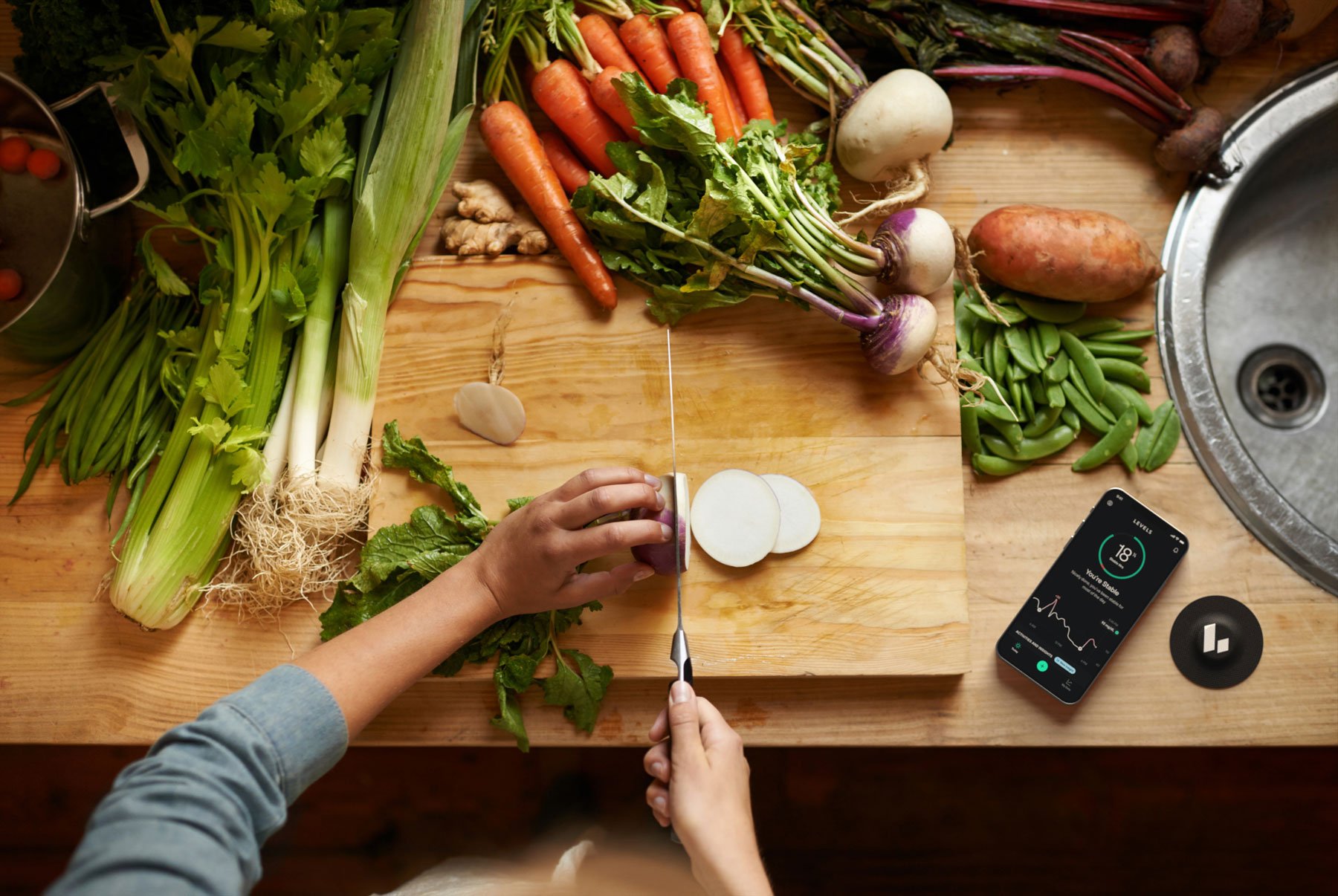
What a CGM can (and can’t) tell you about your diet
Continuous glucose monitors are a powerful tool for seeing how food affects your health. Here’s how to get the most out of wearing one.
Read the Article